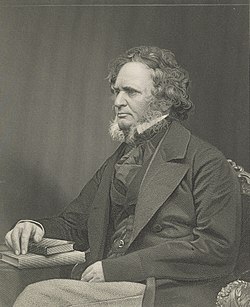
Edward Smith-Stanley, 14th Earl of Derby led the "Who? Who?" ministry, a short-lived British Conservative government which was in power for a matter of months in 1852. Lord Derby was Prime Minister and Benjamin Disraeli served as Chancellor of the Exchequer. [1] It marked the first time the protectionist wing of the Conservative Party had taken office since the Corn Laws schism of 1846. It is also called the First Derby–Disraeli ministry. [2]
Contents
Early in 1852 Arthur Wellesley, 1st Duke of Wellington, by then very deaf, gave Derby's first government its nickname by shouting "Who? Who?" as the list of inexperienced cabinet ministers was read out in the House of Lords. [3]

